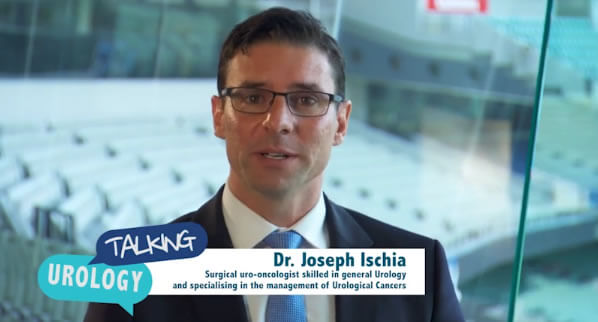USANZ 2017 – Dr Johan Gani
Dr Johan Gani is a fellow of the Royal Australasian College of Surgeons and a member of the Urological Society of Australia and New Zealand, with public appointments at the Austin and Western Hospitals.
Dr Johan Gani discusses detrusor underactivity with Joseph.
Talking Urology podcast transcript
USANZ 2017 Interviews – Johan Gani
This is Talking Urology.
Joseph Ischia: I’m talking with Johan Gani, one of Australia’s Leading Lights in Functional Urology and he is here to give us some insights into Chris Chapple’s talk on detrusor underactivity. So, Johan.
Dr. Johan Gani: Hi, Joe. How are you?
Joseph: I am well. You’re a specialist in this field, in fact, you’ve published a very influential paper regarding detrusor underactivity, incidence, prevalence, and symptomatology.
Johan: Yes, my paper was we looked at the incidence of detrusor underactivity in patients who have had urodynamic studies and we found that in 300 over consecutive patients actually were diagnosed with detrusor underactivity. So, it’s actually a very prevalent condition and we know that other papers have also suggested that especially in those over the age of 70 years up to 45% of patients may have detrusor underactivity. So, it’s a very common condition that’s probably under recognized.
Joseph: Why is that?
Johan: Because the diagnosis is not that easy. There are overlapping symptoms. So, detrusor underactivity or underactive bladder patients may have not only voiding symptoms but they also have storage symptoms and not a lot of us are aware of that. So, they have the typical symptoms of hesitancy, straining, poor stream but we also have to ask about storage symptoms like urgency, frequency as well, nocturia as well because those are very common symptoms that underactive bladder patients may have.
Joseph: What’s your treatment approach to these patients, just in broad strokes, what are the big broad categories?
Johan: So the broad categories are some patients can just be observed, some patients may need to do self-catheterization. We know sacral neuromodulation has a role. Other surgical treatments like TURP may also have a limited role. So, if a patient has had chronic retention for a long time, has minimal symptoms, hasn’t had ever any complications then you can practically just observe these patients. There has been longitudinal studies, especially in men, showing that if you observe men with detrusor underactivity for, there’s a paper saying if you observe them for 13 years only one in six may need a TURP, and only 4% may get into acute retention. So, it’s actually quite safe if they have low symptoms bother you can continue to observe them. Those that you’re more concerned about, the younger ones, who already have symptoms or some symptoms, intermittent self-categorization is very useful in them. We also note TURP may have a limited role in some men. There has been very interesting papers by a Japanese group, it shows good short-term results in terms of IPSS improvement at three months on the initial paper but they followed it up to 12 years and they actually found that the IPSS improved after seven years but beyond that it reverts back the original score. So, for some reason the postulated reason is that these patients as they get older they probably cannot effectively stream as good as what they used to. So, TURP can reduce the outflow resistance, but as the men get older they cannot sustain the same amount of efficient streaming.
Joseph: As a functional urologist, what’s the one bit of advice or what’s the one key mistake that non-functional urologist make when the patients eventually come to see you?
Johan: So the diagnosis is the key thing. It can be very difficult to diagnose underactive bladder or detrusor underactivity. The only available method is to do urodynamic study but it’s impractical to do urodynamic study on everybody. So you have to have a high degree of suspicion. So, patients who have both voiding symptoms and also storage symptoms, they may not just have the overactive bladder especially if they’re old, they have risk factors like lower back surgery, pelvic surgery, neurogenic history. So all of that, if you’re suspicious that they have underactive bladder then they may have it, for example, some patients who do not improve after overactive bladder medications. You have to wonder, did I get the diagnosis right. They may have the underactive bladder too especially if they’re elderly and we also know the underactive bladder can also co-exist with bladder outlet obstruction and overactive bladder at the same time. So, it’s quite insidious and can be a pitfall in terms of diagnosis.
Joseph: Thanks very much, Johan. It’s an absolute pleasure.
Johan: Thank you.










